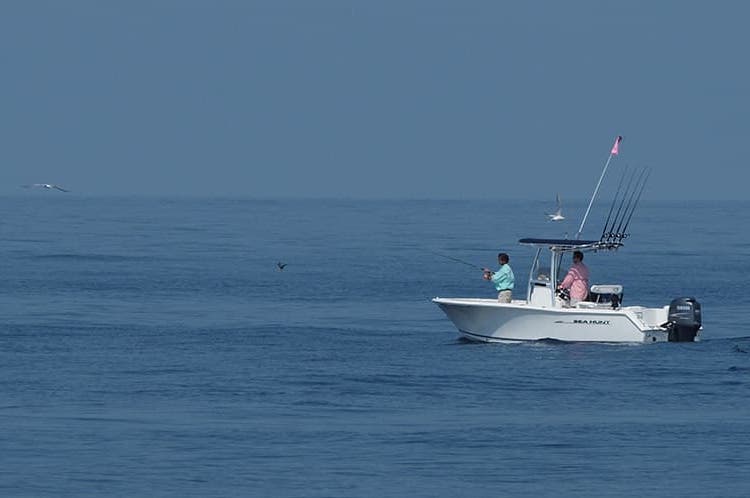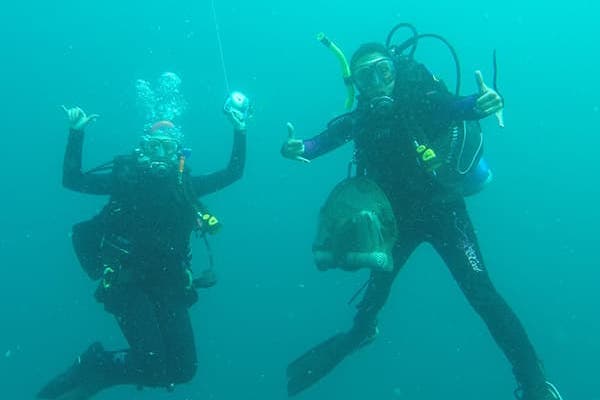Gray’s Reef National Marine Sanctuary
What did we hear?
Click the icons in the scene below to listen and learn about the sounds we recorded in this sanctuary.
Where did we listen?
Here is a map of listening device locations. Hover on a location to see its site id and click on it to see the rationale for its placement.


Learn more about how we
listened to and recorded
soundscapes.
See similar maps
of the listening range for the other hydrophones in this
and in other sanctuaries.
What did we measure?
Spectrogram: intensity of sound at different pitches over time

This example spectrogram from a listening station off the coast of Georgia in Gray’s Reef sanctuary shows that sound levels were louder (warmer colors) at medium pitches and intermittently at lower pitches and quieter (cooler colors) at much higher pitches, reflecting continuous contributions of snapping shrimp and episodic contributions of fish and storm events to this biologically and weather driven soundscape. Information about the quality of the sound data is included along the bottom of the plot with green indicating time periods of good quality data, yellow indicating periods with compromised data, and data gaps shown with white. In the data portal, you can get more information about what frequencies of data are compromised during a time period by hovering over each yellow color bar.
Sound levels above median: loudness and contribution of different pitches

This histogram of above-median sound levels for the northern-most station in Gray’s Reef sanctuary shows inter-annual variability in the soundscape, with maximum overall sound levels dictated by increases at medium and lower pitches due to increases snapping shrimp activity outside of winter and prevalent fish chorusing in spring and fall. Decreases in biolgically driven sound levels in winter are interspersed with temporary increases associated with storm events. Data quality is shown in color as described above.
Power spectrum: variability of loudness across pitch

This power spectrum plot for the northern-most listening site in Gray’s Reef sanctuary shows that medium to high pitched sounds (2000-20,000 Hertz) had the highest median intensities (black line) and were consistently louder throughout the study period (narrow gray band). Sounds with frequencies below 2000 Hertz were generally quieter (black line), but also were more variable over time (wider gray band) due to the seasonal presence of pronounced fish choruses.
Anomaly plot: deviation of loudness from average

This sound levels anomaly plot for the northern-most listening site in Gray’s Reef sanctuary shows the same inter-annual variation seen in the histogram but more clearly identifies broad periods of increased sound levels at medium and high pitches from spring through early fall associated with snapping shrimp, extended periods of increased sound levels at lower pitches associated with fish sound production from spring through early fall, and brief periods of elevated sound levels at lower pitches during storm events in winter. Data quality is shown in color as described above.
Learn more about what we measured and how to read and understand these summary graphs.
See similar summary graphs for the other stations in this sanctuary and here for data available in other sanctuaries.


